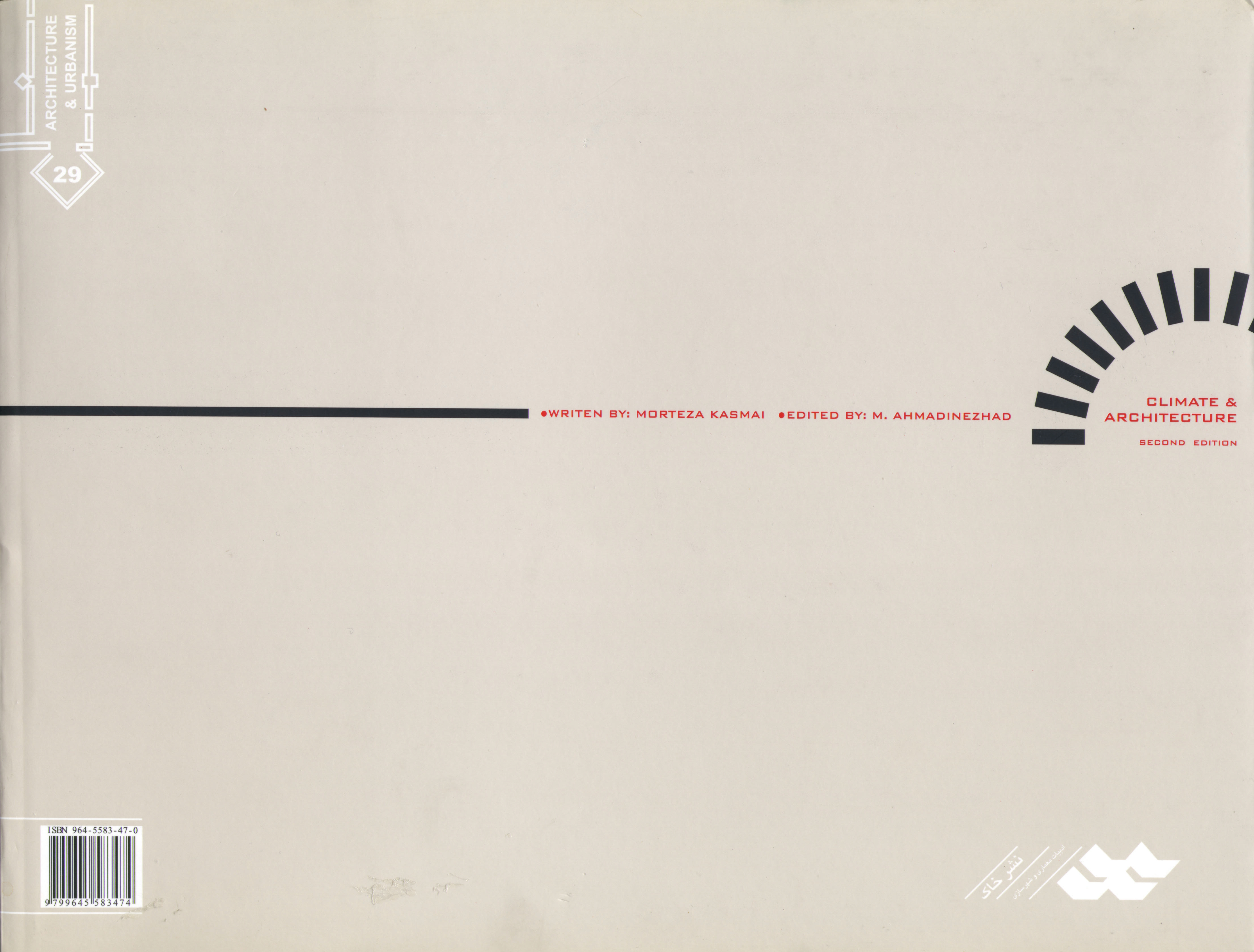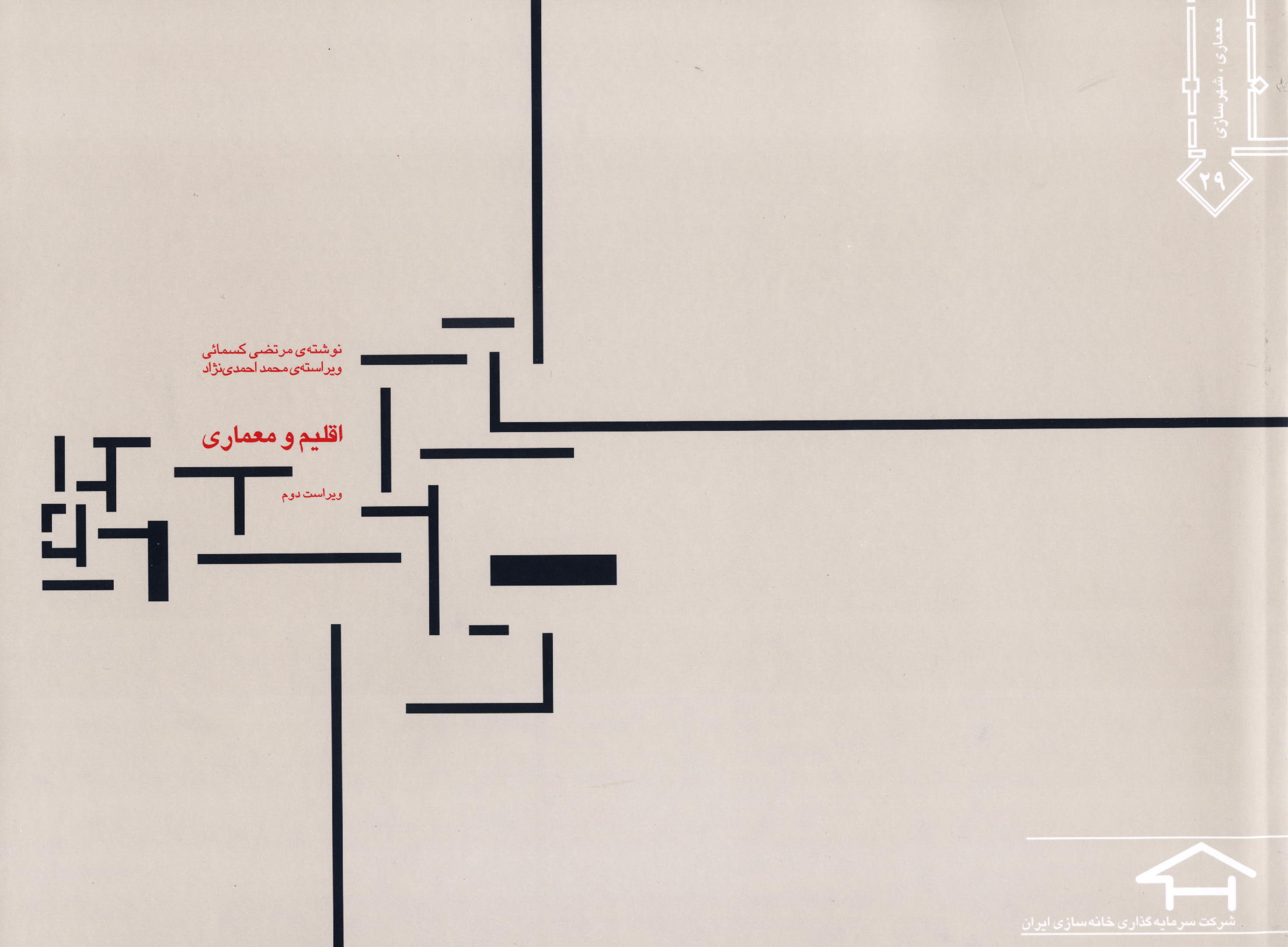Climate and Architecture
Morteza Kasmaei
Iran Housing Construction Company, Tehran, 1984
This book, which from its first publication, served as a textbook in Iran’s Architectural schools, has five chapters and three appendixes. Chapter I, Climatic  Factors, deals with understanding climatic Factors, such as latitude, elevation from sea level and distance from great bodies of water and Climatic Elements such as Radiation, Temperature, Humidity and Wind. Chapter II, Climate and Comfort, deals with issues of human thermal comfort, comfort standards, and impact of various climatic elements on human comfort zone. Chapter III, Building Climatology, which is the main part of this book, deals with architectural design features of a building that affect the indoor climate. The effect of solar exposure of the transparent and opaque elements of building’s envelop, the effects of solar heat gain of the building, the rate of conductive and convective heat gain from, or loss to, the ambient air, affect of natural ventilation, and the effect of different building materials on indoor condition in various climate conditions are discussed in this chapter. Chapter IV, Climatic Regionalism, deals with specific characteristics of different climates around the world and especially in Iran. It describes the regional traditional architecture of different climates of the country and discuses the design objectives in these regions. Chapter V, Design Guidelines, deals with the effects of climatic elements on building design. It also proposes guidelines for climatic design, such as suitable property of building materials, building form and orientation and rate of desirable natural ventilation in four different climatic regions of Iran (cold, moderate and humid, hot and arid, hot and humid).
Factors, deals with understanding climatic Factors, such as latitude, elevation from sea level and distance from great bodies of water and Climatic Elements such as Radiation, Temperature, Humidity and Wind. Chapter II, Climate and Comfort, deals with issues of human thermal comfort, comfort standards, and impact of various climatic elements on human comfort zone. Chapter III, Building Climatology, which is the main part of this book, deals with architectural design features of a building that affect the indoor climate. The effect of solar exposure of the transparent and opaque elements of building’s envelop, the effects of solar heat gain of the building, the rate of conductive and convective heat gain from, or loss to, the ambient air, affect of natural ventilation, and the effect of different building materials on indoor condition in various climate conditions are discussed in this chapter. Chapter IV, Climatic Regionalism, deals with specific characteristics of different climates around the world and especially in Iran. It describes the regional traditional architecture of different climates of the country and discuses the design objectives in these regions. Chapter V, Design Guidelines, deals with the effects of climatic elements on building design. It also proposes guidelines for climatic design, such as suitable property of building materials, building form and orientation and rate of desirable natural ventilation in four different climatic regions of Iran (cold, moderate and humid, hot and arid, hot and humid).
Solar charts for different latitude of Iran with 2-degree intervals, the amount of solar radiation striking on horizontal and vertical surfaces with 4-degree intervals, wind roses, climatic data and building bioclimatic charts of 43 synoptic stations of the country are subjects of three appendixes of this book.
The second edition of this book was published in 2004. Although it has published two decades after its first edition, it is still the main textbook in Architecture and Urban design Schools of Iran. This book in its first year of its publication became the Winner of Five gold medals for bestseller book.
Climatic Design = Energy Savings + Protecting the Environment
Call CDL to meet your energy savings

